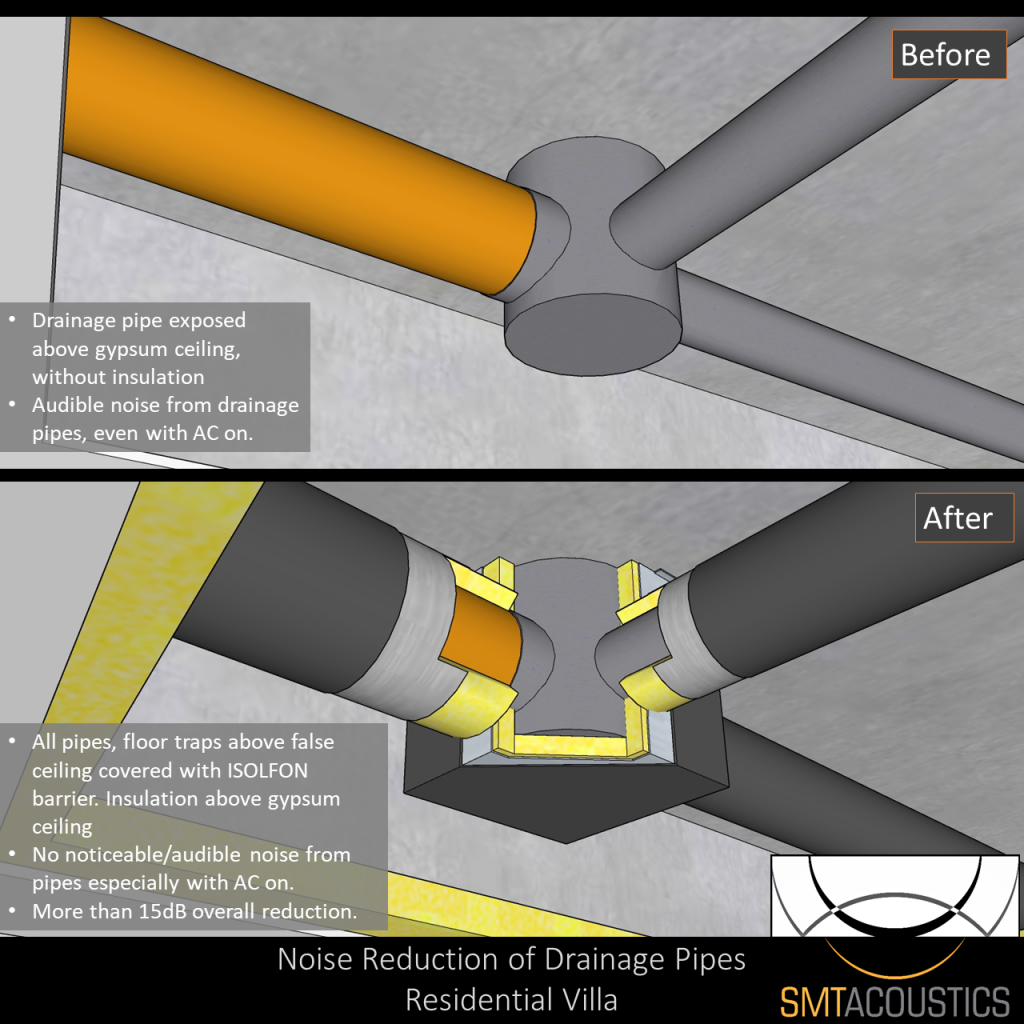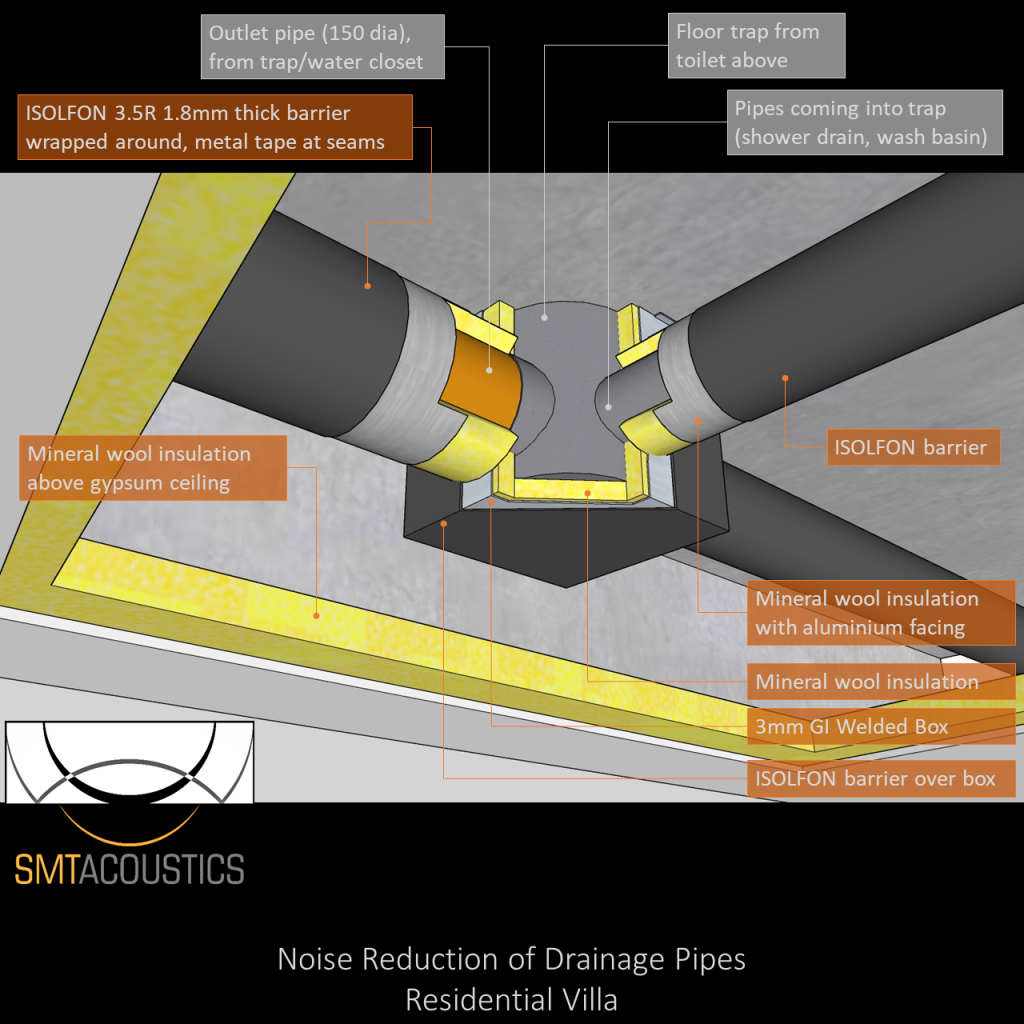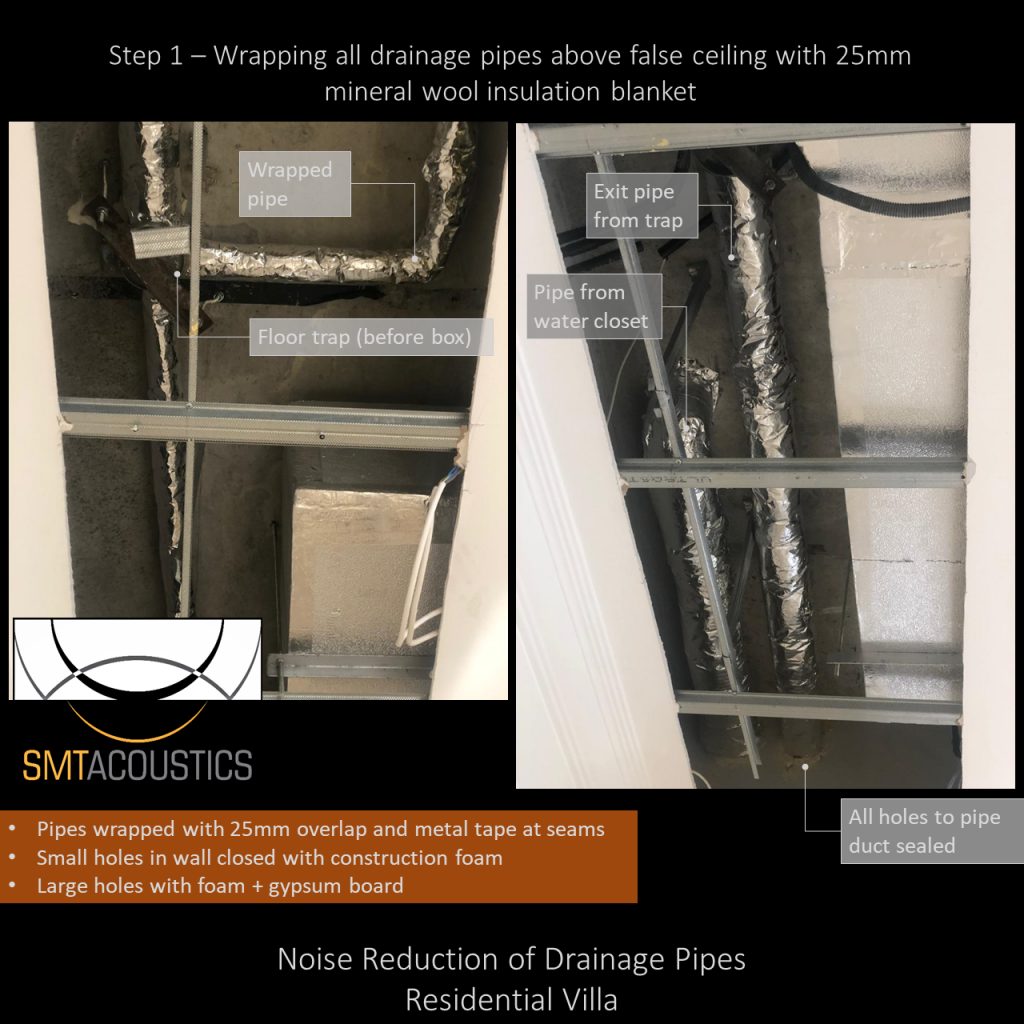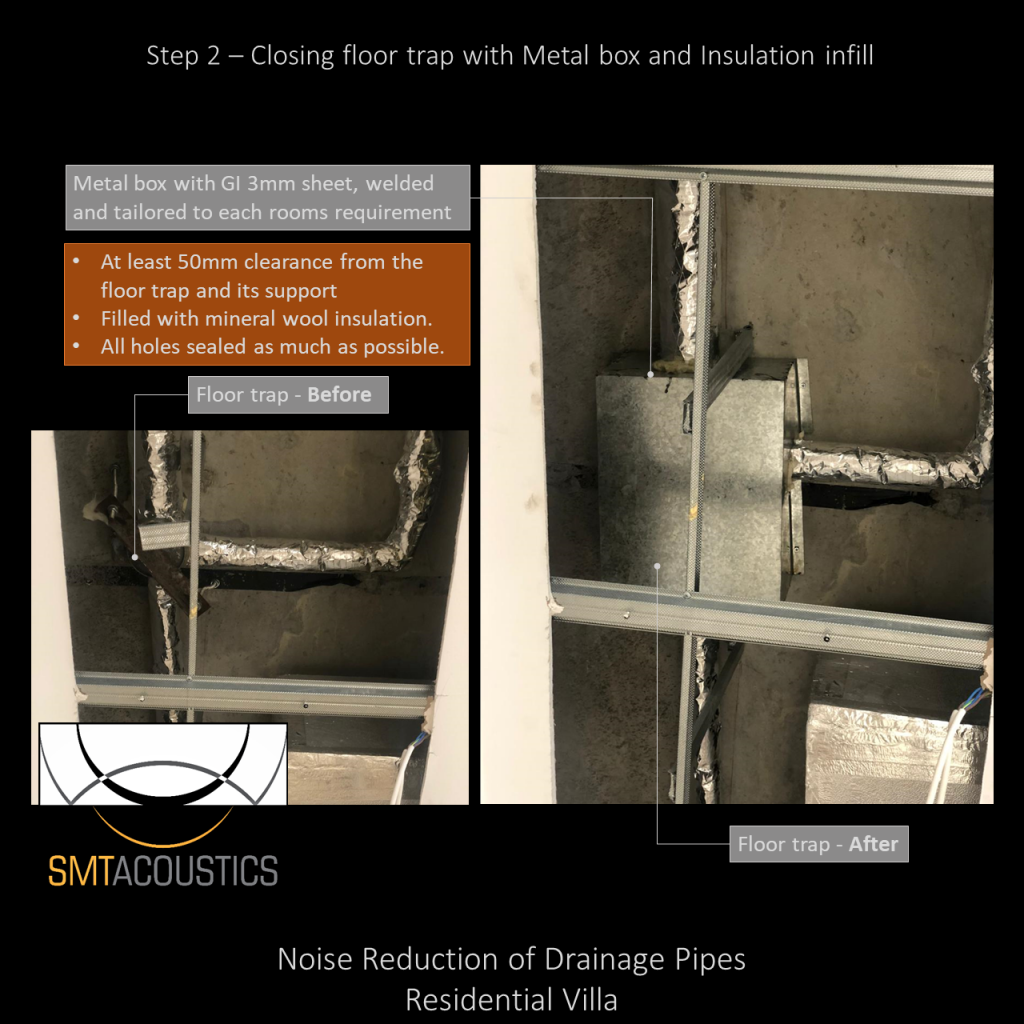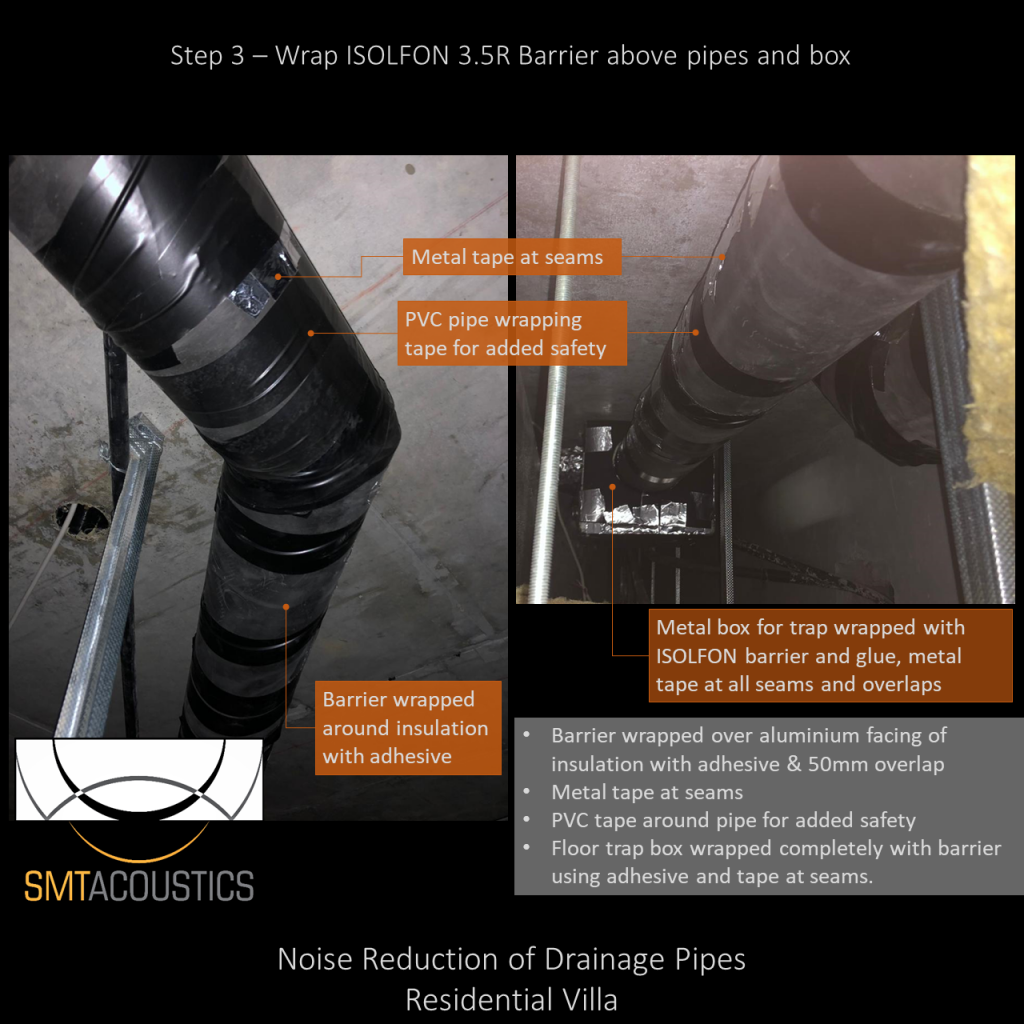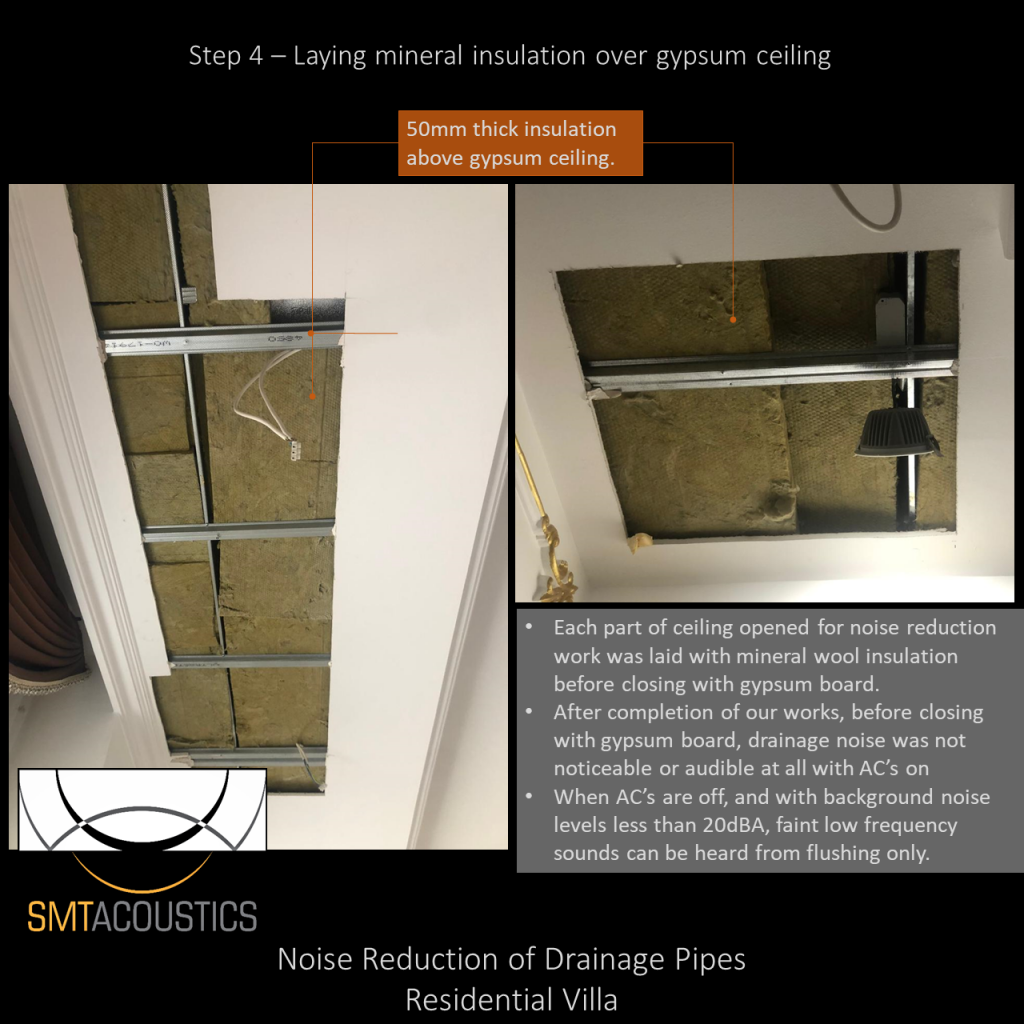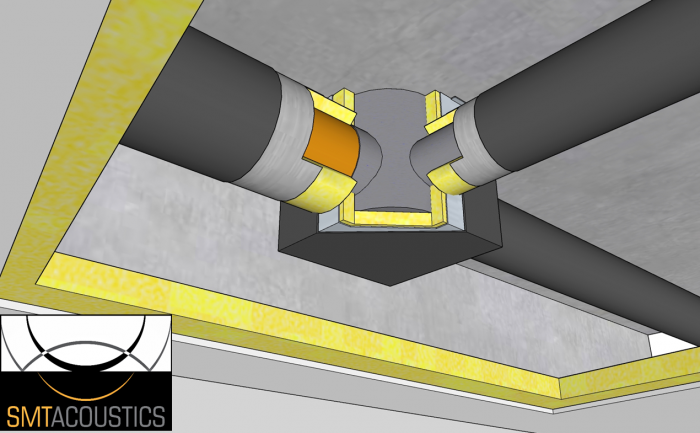
Soundproofing of Drainage Pipes in Residential Villa
Problem
A newly constructed home was facing an issue with their drainage pipes being too loud. The drainage pipes run above the false ceiling and don’t have insulation around the pipes or above the false ceiling.
The source of noise is universally understood. Water supply pipes are pressurized, the water doesn’t splash in the pipe. But drainage pipes aren’t and there is rarely enough water to fill the entire cross section of the pipe as it flows. Drainage pipes rely on slope for the water to flow. As the water flows through pipe and splashes on the wall, it generates noise. Larger the pipe and heavier the flow, the noise would be higher. i.e. flushing would be louder than sink drain or shower drain.
This sort of installation is common practice around Muscat. The noise is generally ignored and in time people get “adjusted” to it. However, in this case, the client felt the pipes were too loud.
Diagnosis
Upon our site visit and inspection, the reason was clear. The background noise in the vicinity of the building is extremely low. There are no busy roads or highways nearby nor do they have noisy neighbors. This section of Muscat is elevated from the nearby places and “serene” almost (in terms of noise at least).
The background noise levels in the house was below 18dBA, which is the lower limit of measurement in our sound level meter. When all the ducted AC units are switched on, we were getting an average of 30-35dBA noise level across the house. While with the AC’s on the noise levels are low, with the AC’s off the noise levels are unnaturally low.
When you sit in a room with extremely low ambient noise or background noise, our ears adjust to it and in a way get more sensitive. We always hear sounds relative to the background noise. When the background noise is 40 dB, and when we talk at 60dB, there is a difference of 20dB. This 20dB is our “signal-to-noise” ratio. Our ears are adjusted to this 40dB background noise, and the speech would sound normal to us. But when the background noise is 20dB and we talk at 60dB, the difference is about 40dB. Which will “feel” very loud, it would feel like the other person is almost shouting.
This phenomenon is critical in cases of concert halls or drama theaters without amplification. The lower the noise level, better the signal is heard. The violin and other instruments which are quieter can be heard better. Obviously the acoustics plays a huge role in this, but the background noise is a factor which simply cannot be escaped.
Solution
The only practical and economical solution was to soundproof the noise source itself. i.e. the pipes above the false ceiling.
We designed a solution which would effectively bring the pipe noise (~40dB) much lower than the background noise with the AC’s on (~35dB). We considered the Rw values of our soundproofing membrane ISOLFON 3.5R and a 3mm thick GI box for the floor traps. Overall a 12-15 dB reduction would meet the requirement of the client.
The pipes would be wrapped with 25mm thick insulation with aluminium facing, and covered with our barrier with at least 5cm overlap. The floor trap would be covered with insulation and a GI soundproofing box before wrapping with the barrier. Together, this should theoretically provide approximately 23dB reduction in the pipe noise. Which would give us a safe 6dB margin from loss of performance due to workmanship and issues related to site conditions.
In an ideal scenario, the hangers of the drainage pipes would be changed to vibration isolation clips, like the Vibro PI Mini. This was not possible in this case due to low clearance (less than 10cm between pipe and ceiling slab). Without changing these hangers, we would inevitably have some noise passing over to the structure. We would also have to wrap our soundproofing around these hangers, leading to more overlaps and plausible leaks.
Installation
A brief about the works have been described below.
Upon completion of our works, the drainage noise was only audible as a faint low frequency rumble when the AC’s are switched off and noise levels below 20dBA. That too, only from flushing. With the AC’s on, the drainage noise was not audible or noticeable. There was no noticeable increase in noise levels as well.
We completed our works as per schedule and the client was very satisfied with our works. A great addition to our portfolio and our very first project using products from Alpha Acoustiki.

